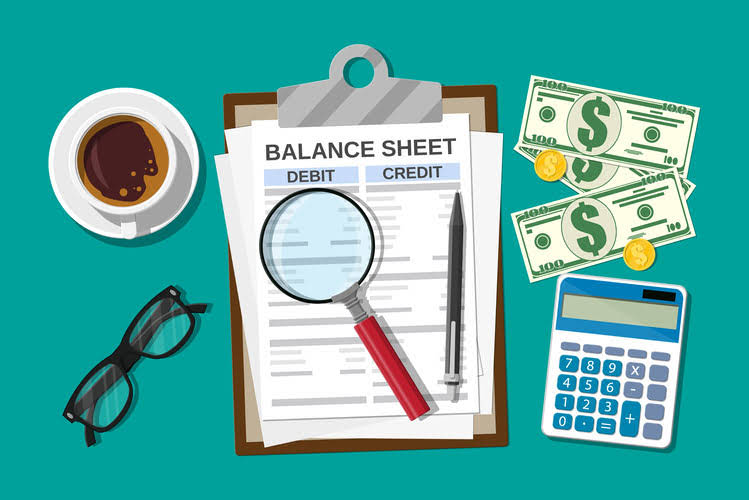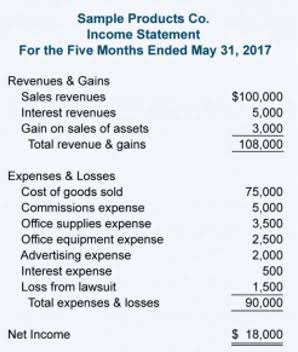Content

The operating activities of a business will depend on the nature of the business. For example, the operating activities of a watch company will be the manufacturing, marketing, and selling Cash Flow from Financing Activities of watches. The purchase and sale of land will be considered as an operating activity for a real estate company. Did your cash balance increased or decreased over the last year?
Every entity needs to present the cash flow statement as part of its Annual Accounts/Reports. And these are Cash Flows from Financing Activities, Cash Flow from Operational Activities, and Cash Flow from Investing Activities. So Cash Flow from Financing Activities is an important part of the cash flow statement. It primarily reveals the sources and uses of cash for an entity. In other words, it conveys therefrom all the cash is coming in and where are all those cash is going out of the business during a given period. The indirect method uses net-income as a starting point, makes adjustments for all transactions for non-cash items, then adjusts from all cash-based transactions. An increase in an asset account is subtracted from net income, and an increase in a liability account is added back to net income.
Ongoing activities may include manufacturing and selling products or providing services to customers, payment for purchases, employee salaries, taxes and other operating expenses. Unlike other financial statements, the cash flow statement is only concerned with cash going into and out of a business. The statement is most frequently used by both business owners and investors to measure how well cash is being managed https://www.bookstime.com/ from day-to-day operations, from any investing activities, as well as financing activities. Greg didn’t invest any additional money in the business, take out a new loan, or make cash payments towards any existing debt during this accounting period, so there are no cash flows from financing activities. A cash flow statement tells you how much cash is entering and leaving your business in a given period.
Cash Flow Analysis: Basics, Benefits and How to Do It
However, it might be a sign that the company is not generating enough earnings. Also, as interest rates rise, debt servicing costs rise as well. It is important that investors dig deeper into the numbers because a positive cash flow might not be a good thing for a company already saddled with a large amount of debt. However, if a company sells its assets or investments during a particular period, the cash flow from investing activities can be positive. Negative cash flow is anything that reduces the capital that your organization has. Repayments of debt, repurchases of equity and capital leases and dividend payments all result in negative cash flow. This is because when your organization repurchases, repays or distributes dividends, it spends capital.
- Purchase of Equipment is recorded as a new $5,000 asset on our income statement.
- It usually gives little consideration to actual year-to-year change in value.
- Accounting practices, tax laws, and regulations vary from jurisdiction to jurisdiction, so speak with a local accounting professional regarding your business.
- Hastings Corporation received $400,000 in cash by signing a note payable with a bank.
- So that entire amount will be reflected on your cash flow statement.
Either way, it must make interest payments to its bondholders and creditors to compensate them for loaning their money. Add all cash outflows from stock repurchases, dividend payments, and repayment of debt. Cash flow from investing activities includes capex investment for future growth, Purchase and sale of investments and cash outflow on acquisitions.
Cash Flow in the Financial Statement
A declining firm may have a positive cash flow from operating and investing activities and a negative cash flow from financing activities as it uses money from its business to pay back its investors. Any change in the balances of each line item of working capital from one period to another will affect a firm’s cash flows. This is a negative event for cash flow and may contribute to the “Net changes in current assets and current liabilities” on the firm’s cash flow statement to be negative.
It also shows the opening balance and closing balance of the retained earnings. The net change in cash for the period is added to the beginning cash balance to calculate the ending cash balance, which flows in as the cash & cash equivalents line item on the balance sheet. Conversely, if a company is repurchasing stock and issuing dividends while the company’s earnings are underperforming, it may be a warning sign. The company’s management might be attempting to prop up its stock price, keeping investors happy, but their actions may not be in the long-term best interest of the company.

Another note payable was paid off prior to its maturity date because of a drop in interest rates. With NetSuite, you go live in a predictable timeframe — smart, stepped implementations begin with sales and span the entire customer lifecycle, so there’s continuity from sales to services to support. With a powerful ERP available, much of that process is automated, allowing you to do more with fewer staff.
These articles give you a basic understanding and the tools you need. Use them to improve your credit decision-making process by examining all three of these financial statements to get the best idea of how a current or potential customer’s company is doing. If all of a company’s operating revenues and expenses were in cash, then Net Cash Provided by Operating Activities would equal Net Income . Typically, adjusting Net Income on the Cash Flow Statement is based on an increase or decrease in cash calculated from changes on the Balance Sheet from one period to the next. E) Insurance costs are also fixed costs that are incurred when a financed asset is purchased and has to be protected against fire, weather, theft, etc. Usually, lenders require that a financed asset be insured as a meant of security for the loan. Some operators, particularly those with low equity, also insure some of their more valuable assets because of the strain the loss of those assets would place on the financial condition of the business.
General Accounting
The Cash Flow Statement Indirect Method starts with net income and adds or deducts from that amount for non-cash revenue and expense items. Cash flow refers to the money that flows in and out of your business.

While the Cash flow and P&L statement are prepared on a standalone basis (representing the given year’s financial position), the Balance Sheet is prepared on a flow basis. As you can see, ARBL has consumed Rs.344.8 Crs in its investing activities. This is quite intuitive as investing activities tend to consume cash. Also, remember healthy investing activities foretells the investor that the company is serious about its business expansion. Of course, how much is considered healthy and how much is not, is something we will understand as we proceed through this module. Whenever the asset of the company increases, the cash balance decreases. The cash flow statement can be used to determine free cash flow to the firm and free cash flow to equity .
Fundamental principle in IAS 7
There is no set number or parameter that one can use to tell if the cash balance or flow from financing activities is healthy. However, to determine the health of financing activities, one should compare an entity’s financing and investing activities against operating activities. A point to note is that small entities with no debt and no dividend payment may not have any financing activities. So, their cash flow statement may not have any transactions from financing activities.
Which of the following is not a cash flow?
Solution(By Examveda Team) Purchase of fixed asset is NOT a cash inflow. Cash inflow is the money received by an organization as a result of its operating activities, investment activities, and financing activities.
As retained earnings are linked to the Net Income from the income statement. If a company has surplus cash, it can be assumed that it operates in the so-called safe zone. To wrap up, the cash flow from financing is the third and final section of the cash flow statement. Companies report cash flow from financing activities in their annual 10-K reports to shareholders. For example, for the fiscal year ended Jan. 31, 2022, Walmart’s cash flow from financing activities resulted in a net cash flow of -$22.83 billion. However, it takes more time to prepare a cash flow from operations statement using Direct Method. Equity is a percentage of ownership in an organization that allows the owners of that equity to profit from the growth of a business and have an influence on its daily operations.
Investment in a second business
This is important in preparing for and surviving lean periods or economic downturns. The investing activities of a business will depend on the nature of the business. For example, the purchase of land will be considered as investing activity for a watch company while it will be considered as an operating activity for a real estate company. In OA, depreciation which is cash out, it is shown as +, “Net income from sale of tangible assets” which is cash in is shown as -. At same time in IA, “purchase of tangible assets” which is cash out is shown as – and “dividends received” is cash in is shown as +.

We know from the balance sheet that ARBL did not undertake any new debt. The cash flow statement is linked to a company’s income statement and comparative balance sheets and to data on those statements. For example, David owns a small factory that manufactures key components used in airplanes. Because orders have increased so much, David decides to sell the current plant and purchase a much larger one. All of these transactions take place in 2020 and will be reflected in the company’s cash flow statement for the period.
Accounting for Managers
It can be positive, or negative, which is obviously a most undesirable situation. The chapter develops the concept of cash flow and then shows how the funds can be used in the business.
- This allows you to determine whether your cash flow from financing activities is positive or negative within that period.
- This can include the purchase of a building, the sale of equipment, or investing in stocks.
- Because the cash purchase is used long term, standard accounting practice allows businesses to consider the purchase of assets as an investment.
- The net cash flow number for the year is also reflected in the balance sheet.
- Similarly, if the long-term or short-term debt balance drops, it would mean repayment of the debt or a cash outflow.
- The next component of a cash flow statement is investing cash flow.
If I were to pose the equivalent question to a company, I might be given the cash flow statement as the answer. A legitimate company has three main activities – operating activities, investing activities and the financing activities. Though few in number, these investing and financing transactions are very important and usually involve big chunks of money. When David runs his cash flow statement at the end of the year, the following items will be displayed in the investing activities section of the statement. Purchase of Equipment is recorded as a new $5,000 asset on our income statement.
It is also important to understand how changes in these activities impact cash flow. Several investing and financing activities may affect a company’s capital structure but do not involve cash. The bottom line on the statement is the Net Increase in Cash and Cash Equivalents. It’s determined by calculating the total cash inflows and outflows for each of the three sections in the Cash Flow Statement. Most of these adjustment items can either result in an increase or decrease in cash from operating activities. Exceptions would be adjustments for depreciation and amortization, which are always an increase to Net Income on the Cash Flow Statement.
Why direct method cash flow is best?
A business' cash flow statement shows the company's profits and losses within a given time frame. The direct method is particularly useful for smaller businesses that don't have a lot of fixed assets, as the direct method uses only actual cash income and expenses to calculate total income and losses.
I’ve explained the same in section 8.2, suggest you look at it once again. Liquid assets are assets that can be easily converted to cash or cash equivalents. Cash movements from Debt related or Equity related activities such as borrowing and paying debts . In many cases, a business needs more money which it raises through Borrowing or through the company owners or a combination of the two.
Five Steps to Cash Flow Analysis
This number tells us how much money the company has in its bank account. Calculating cash flow from investing activities is completed automatically if you’re using accounting software to manage and record your financial activities.
- In this, there is only one cash inflow (long-term debt), and all others are cash outflow.
- You use information from your income statement and your balance sheet to create your cash flow statement.
- The cash flow statement reveals the quality of a company’s earnings (i.e. how much came from cash flow as opposed to accounting treatment), and the firm’s capacity to pay interest and dividends.
- While the income statement provides the details of income, expenses and net profit earned during a particular time period and the balance sheet of the financial position of the company at a certain point in time.
- Thus, large amounts in this line item can be considered a trigger for a more detailed investigation.
- Cash flow is a measure of how much cash a business brought in or spent in total over a period of time.
This also includes interest payments to debt financiers and payment of dividends to shareholders. This shows the cash spent by the company in investments made for future growth. The investment could be in property plant and equipment or acquisition of other businesses or investments in securities of other Companies.
In 1987, FASB Statement No. 95 mandated that firms provide cash flow statements. In 1992, the International Accounting Standards Board issued International Accounting Standard 7 , Cash Flow Statement, which became effective in 1994, mandating that firms provide cash flow statements. Take the cash received from issuing equity and debt, subtract cash paid to repurchase equity and debt, and then subtract funds paid as dividends to calculate cash flow from financing activities. The financing activities of a business provide insights into the business’ financial health and its goals.


